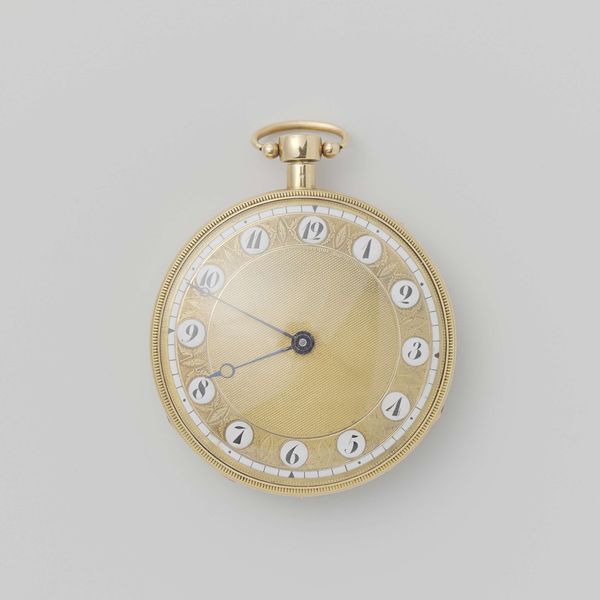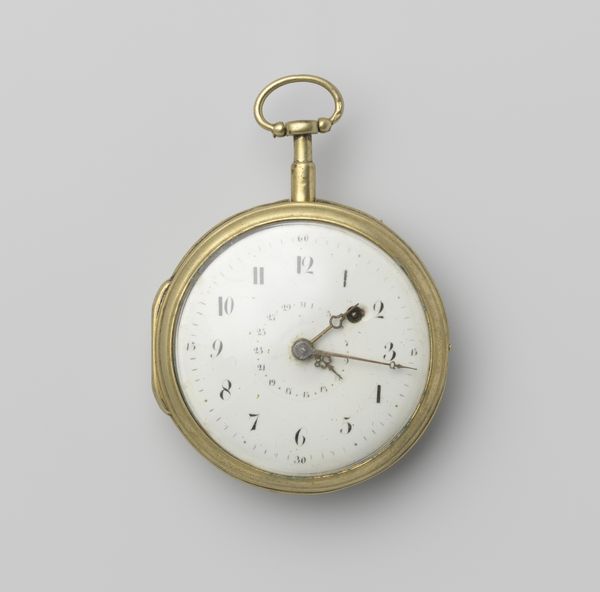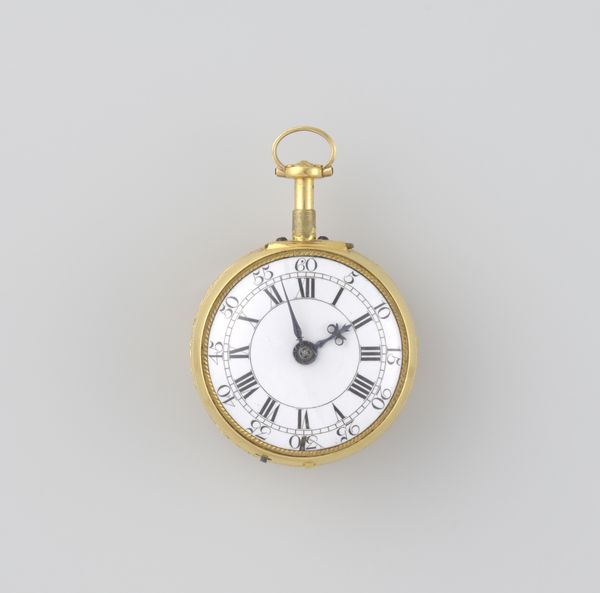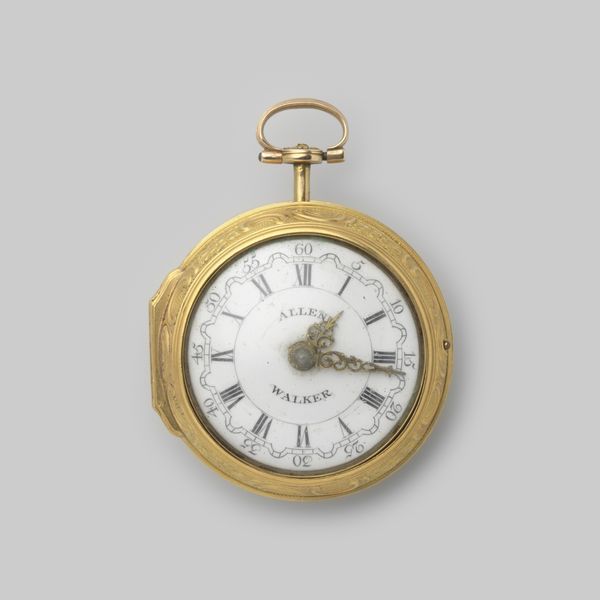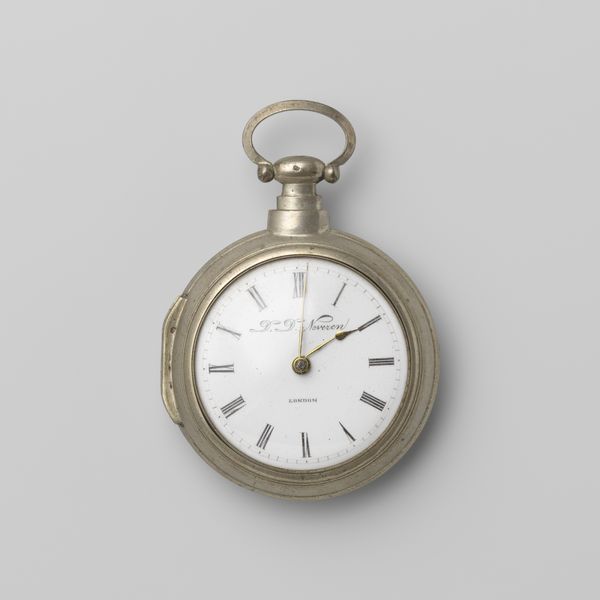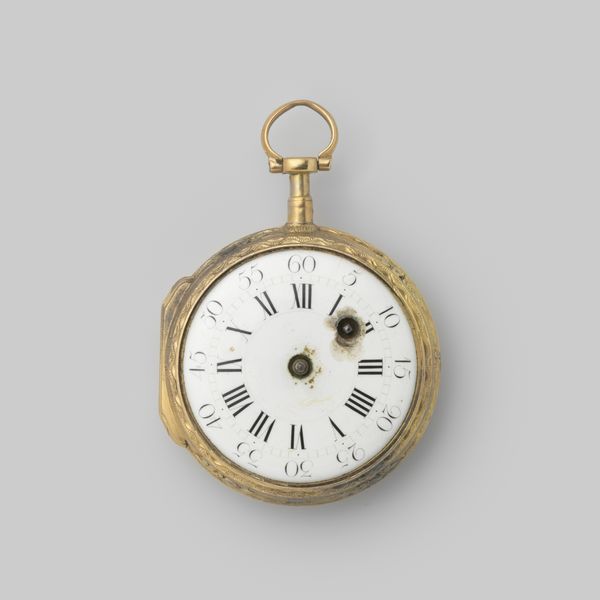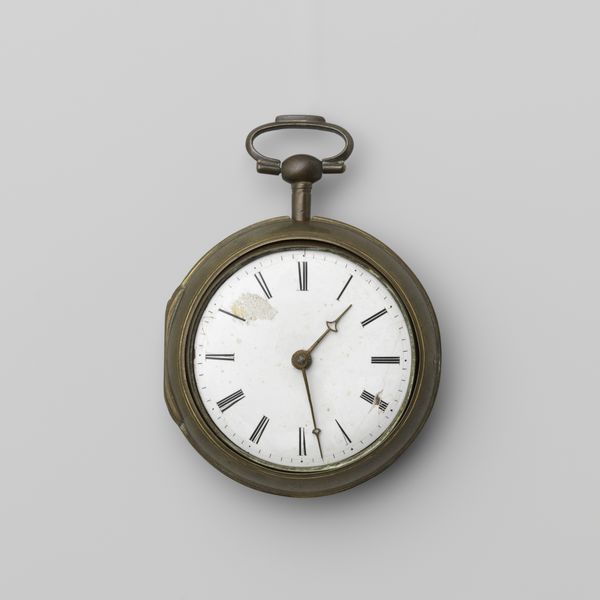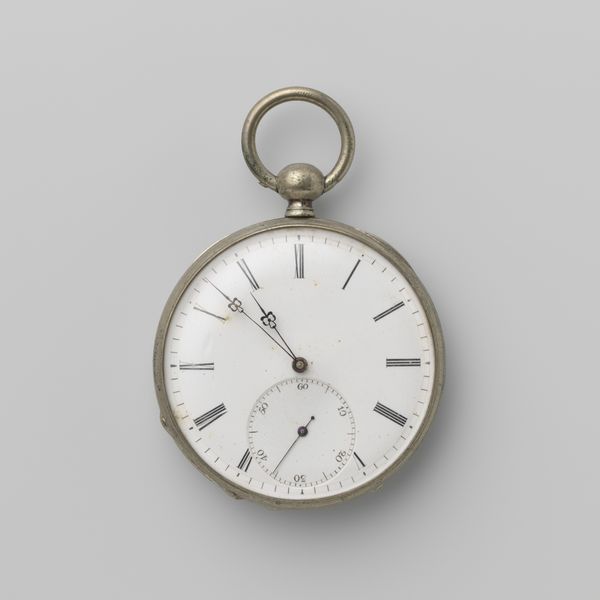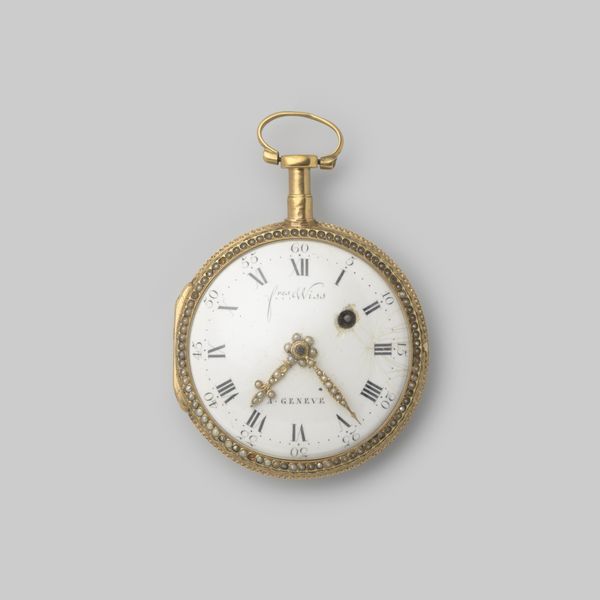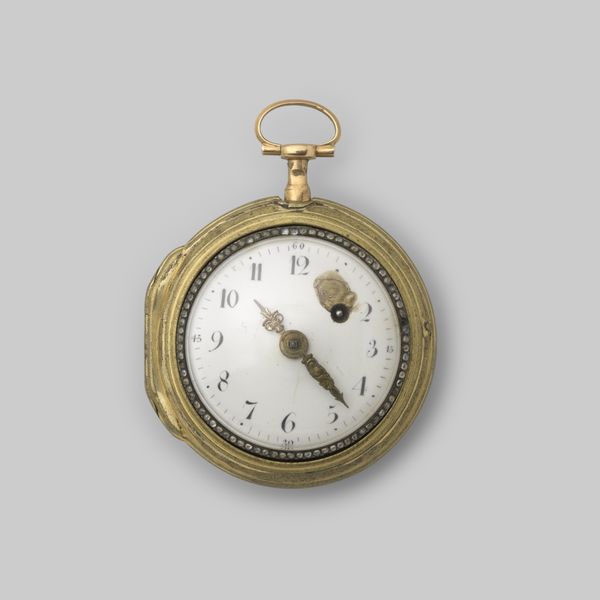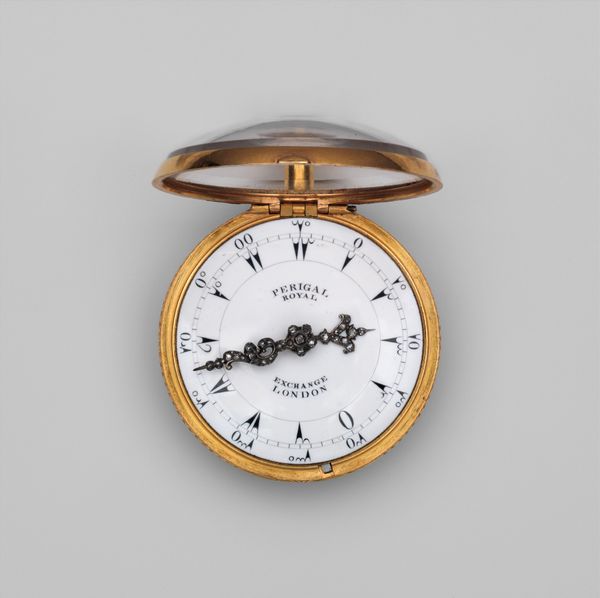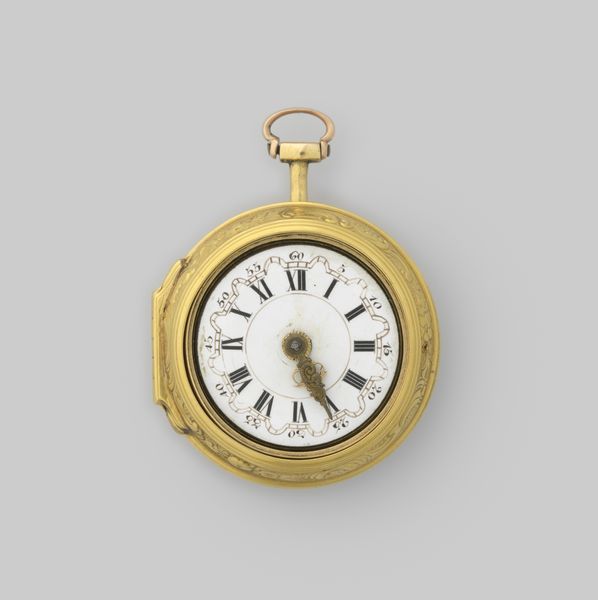
metal, photography
#
portrait
#
neoclacissism
#
still-life-photography
#
metal
#
photography
Copyright: Rijks Museum: Open Domain
Curator: Our attention is drawn to a stunning Neoclassical still life dating from around 1800, simply titled "Watch" and signed by Chevalier et Cochet. It's crafted from metal, captured beautifully in this photograph. What's your initial take on this piece? Editor: I'm immediately struck by the clock's inherent geometry – that gleaming circle of the frame, punctuated by the strict lines of the numerals. It exudes a very poised sense of order and refined luxury. Curator: Absolutely. If we look at it through the lens of material production, think about the labour involved. Metalwork of this quality demands specialized skills. Who were Chevalier et Cochet? Were they independent artisans, or a workshop reliant on many hands? The rise of the clock industry and division of labor are embedded within such an object. Editor: A compelling point! Yet, notice how the light catches the gold, defining the form with incredible precision. The artist manipulates tone to create subtle variations across the surface of the metal, heightening its elegance. It's an excellent visual balance – that weight of gold balanced by the openness of the watch face. Curator: Agreed. And consider this "still life photography" as a documentation practice. Why this level of detail of documenting material objects? It says something about how the Enlightenment-era obsession with cataloguing and understanding every object from nature to artisan work. It's all intertwined with the watch's functionality as well – a tool to order and measure labour, for time management, that trickles from above. Editor: That connects so neatly with the semiotics of the time. The watch in isolation isn't simply decorative – time and measurement in themselves have this historical power to command social activity and behaviors. To document that as an emblem seems incredibly prescient. Curator: It does. And through exploring the techniques, materials and production processes surrounding this seemingly straightforward object, we uncover a deeper, richer portrait. It becomes an allegory of labor. Editor: Ultimately, the watch reflects the interplay between art and functionality. Looking deeper reveals a wealth of cultural and philosophical layers!
Comments
rijksmuseum about 2 years ago
⋮
The engraving of highly refined repetitive geometric designs became possible with the introduction of the guilloche engine turning machine at the end of the 18th century. Cases and dials were generally ornamented with straight lines and spirals, although more complex patterns were also possible. The matt and shiny parts of the rosette on this case are built up of contrasting geometric patterns.
Join the conversation
Join millions of artists and users on Artera today and experience the ultimate creative platform.
